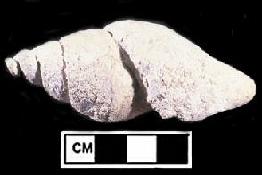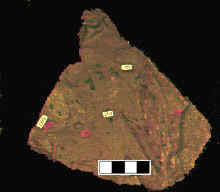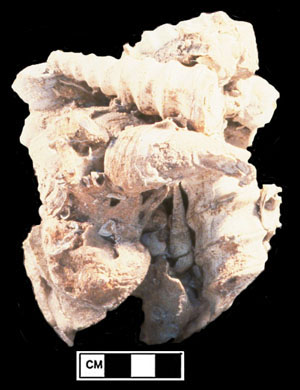How Are Fossils Preserved?
Fossils Common to Central Texas
Molds & casts
Sometimes an organism will not decay until after sediment has hardened around, or inside, its form, and preserved a mold or a cast of the original shape. Internal casts of gastropods (snails) such as this Cretaceous one are often found around Austin. You may have seen them referred to as ‘steinkerns‘ – internal casts of the original organism.
Sometime we make casts or molds of fossils for research or exhibit purposes. This original block with the thin carbonized imprint of a leaf on the surface is fragile, and would disintegrate if displayed. This is one instance where the NPL would make a cast rather than display the actual specimen.
Replacement
In other circumstances the mineral composition of the original object may be altered by fluids flowing through the rocks at some later time. The beautiful brachiopods of the Permian aged Glass Mountains in West Texas are preserved as silica replacements of the original calcium carbonate shells.
Silica replacement also was responsible for these unusually intricate clusters of fossils found in the Edwards limestone north of Austin.




